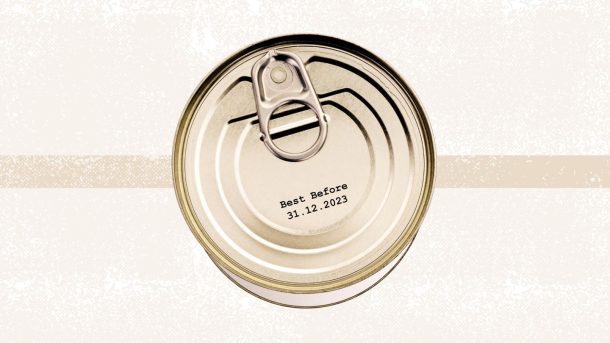Some people fear snakes. Others fear heights. For me, it’s spoiled food. I know this fear isn’t rational, but should I really be concerned?
Ever found yourself staring at a carton of milk or a package of chicken, wondering whether it’s still safe to eat even though the expiration date has passed? You’re not alone. Food expiration dates can often seem like a perplexing enigma, leading many of us to toss out perfectly good food simply because the date on the package has passed. Understanding these dates is not just about avoiding waste—it’s also about making informed choices to keep both your budget and your environment in check.
At some point, everyone must confront their fears. For me, that starts with understanding expiration dates. Do I really need to throw food away by the date printed on the carton or the use-by date on meat? If not, how long can I keep it before it goes bad? And what does “going bad” really mean? Is it unsafe?
Here are five facts about expiration dates that may surprise you:
1. Expiration Dates Aren’t Required by Law
I assumed expiration dates were governed by strict regulations, but that’s not the case. According to the USDA, the federal government does not require expiration dates on food. Although some states do have their own dating regulations, these are mostly for infant formula.
2. Different Dates Have Different Meanings
Terms like “Sell-by,” “Best if used by,” and “Use-by” have similar but slightly different meanings. None of these indicate safety dates for food (except for infant formula). Instead, they describe the quality of the product.
Sell-by Date: This date is for retailers, indicating when they should rotate products off the shelves.
Best if Used by Date: This date is about quality. The food won’t be “bad” after this date, but it might not be at its best.
3. How Long Does Food Last Past the Expiration Date?
A Use-by date is the last day the manufacturer suggests using the product for the best quality, not safety. So how long will food last after its expiration date? It depends on what it is and how it’s stored. For example:
- Ground Meat and Poultry: 1 to 2 days past the date
- Beef: 3 to 5 days past the date
- Eggs: 3 to 5 weeks past the date
If you’re concerned about food safety, trust your senses. For instance, if you bought raw chicken and it’s been two days in the fridge after the “Sell-by” date, give it a smell. If it’s bad, you’ll know immediately. The same goes for milk. It might be good for several days after the “Sell-by” date, but if it smells sour, it’s bad. To keep track of dates, keep items in their original packaging or label them effectively to ensure you cook chicken and other foods at their peak freshness.
4. Does Food Lose Nutritional Value Before Expiration?
That depends on the food. Take orange juice, for instance. A cup of orange juice offers a full day’s dose of vitamin C. But once open for a week, it loses antioxidant benefits due to air and light exposure, sometimes even before its expiration date.
Some foods do lose nutrients when exposed to oxygen. Cooking also reduces nutritional content slightly. Therefore, aim to eat fresh fruits and vegetables soon after purchase. But don’t worry too much about nutrient loss.
5. Is Food Safe After It Expires?
Expiration dates refer to quality, not safety. For example, if a refrigerated product was kept below 40°F and handled properly, it may look or smell a bit off but is not necessarily unsafe. However, if left at room temperature or contaminated, harmful bacteria could cause illness, making it unsafe to eat.
Never thaw perishable foods on the counter for longer than 2 hours. The outer surface may enter the Danger Zone, a temperature range between 40°F and 140°F where bacteria multiply rapidly. For this reason, avoid eating meat, poultry, eggs, or sliced fresh fruits and vegetables left out for more than 2 hours (1 hour if it’s hotter than 90°F). This issue isn’t related to expiration dates but affects all foods.
The Bottom Line
While some states require expiration dates and regulations exist for infant formula, federal law doesn’t mandate them for most foods. “Sell-by” dates are for retailers, while “Best if used by” dates indicate quality, not spoilage. Properly stored food lasts longer and is safer to eat. The best way to determine if food is going bad is not by the expiration date but by visually inspecting it and smelling it.




1 Response
[…] found yourself staring at a carton of milk or a package of chicken, wondering whether it’s still safe to eat even though the expiration date […]